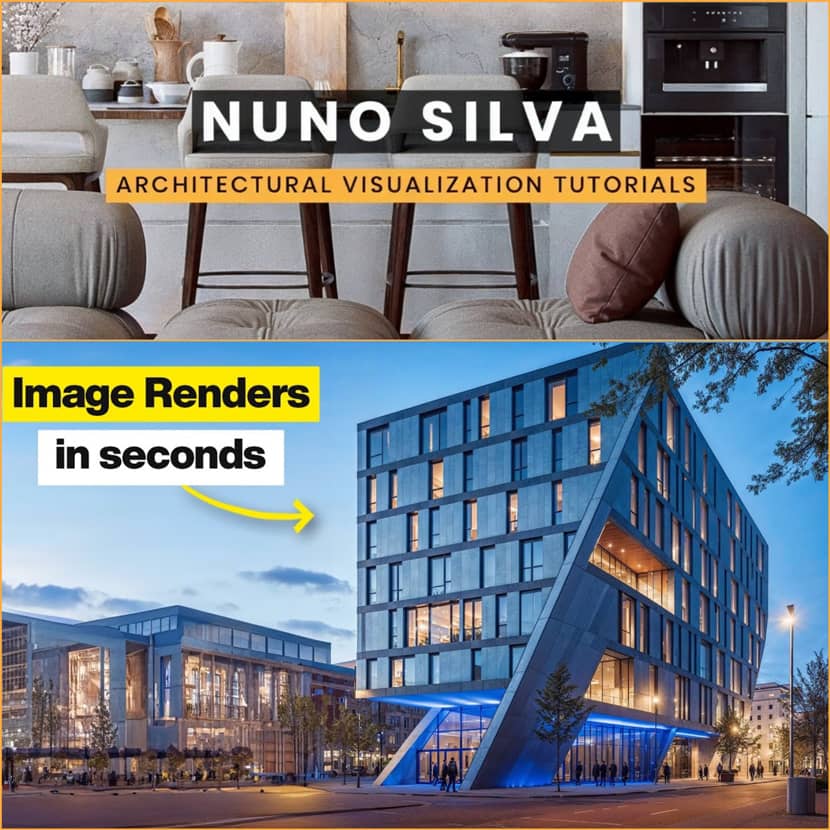
In architectural visualization as a narrative process, the results must be consistent for an easy workflow. In this article, Nuno Silva describes PromeAI's functions concerning the coherence of the high-quality render and explains how those tools will be helpful for architects and designers.

The Consistency Model: A Game-Changer in Architectural Rendering.
According to Nuno, one of PromeAI’s standout features is the Consistency Model. This tool ensures a unified look and feel across multiple images in a project, which is critical for architectural visualizations where harmony in design is vital. With the Consistency Model, you can create images with a consistent style, simplifying the design review process and improving client communication.
How It Works:
- Reference Images and Custom Models: Users can begin by uploading reference images, whether photos, sketches, or prior designs. PromeAI allows for either the use of pre-made models or the creation of custom models tailored to specific project aesthetics.
- Adding Prompts for Precision: Prompts guide the AI in developing detailed designs. For instance, Silva demonstrates this by using a reference image of a modern house, prompting the AI to emphasize minimalist lines, natural lighting, concrete, and glass materials. He adds views such as front, side, and back perspectives to create a fully comprehensive model that adapts fluidly to each angle.
This approach allows you to reuse saved models in future projects, saving time while maintaining style continuity. He also notes that these elements simplify the predesign phase, enabling rapid, high-quality adjustments.Enhanced Sketch Rendering & Photo-to-Sketch Tools.
Another powerful tool that PromeAI offers is enhanced sketch rendering and the photo-to-sketch tool. These features streamline the design process, particularly during concept development, and deliver eye-catching visual results for client presentations.
Both tools allow designers to convey different aspects of their designs visually appealingly, making them perfect for creative presentations and design proposals.
HD Upscaler: Elevating Image Resolution.
To ensure that renders are as detailed as possible, Silva frequently uses the HD Upscaler feature. This tool enhances the resolution of images, refining details and reducing imperfections without compromising the quality of the design. Silva describes this feature as a “pleasant surprise,” noting its recent improvements and its ability to add clarity to images in a way that traditional post-processing techniques often struggle to match.
For professionals looking to deliver high-impact visuals, the HD Upscaler is invaluable, allowing for sharper details and more precise, more professional results.
AI as an Empowering Tool, Not a Replacement.
In the rapidly evolving world of architectural design, AI tools like PromeAI are reshaping the workflow of creatives across the industry. Silva emphasizes that these tools are not intended to replace the creativity and intuition of architects and designers. Instead, they enhance their capabilities, offering efficiency and consistency that allow professionals to focus on the creative aspects of their work.
Silva sees PromeAI as a tool to “stay ahead in a fast-evolving industry,” underscoring the importance of continual learning and experimentation with AI-driven technologies.
Conclusion.
Nuno Silva’s use of PromeAI exemplifies the potential of AI to enhance the architectural visualization process. By leveraging features like the Consistency Model, Enhanced Sketch Rendering, Photo-to-Sketch, and HD Upscaler, Silva creates images that are not only consistent but also strikingly realistic. For architects and designers, PromeAI offers a practical pathway to elevate their work, bringing creativity and efficiency together in harmony.
As AI advances, tools like PromeAI will likely become essential companions in the creative process, helping professionals push the boundaries of what’s possible in architectural design.
Check out the video tutorial on how to use PromeAI for consistent results below:
Nuno Silva is a Portugal-based 3d artist and content creator dedicated to helping artists across the internet.